Events
| Name | organizer | Where |
|---|---|---|
| MBCC “Doing Business with Mongolia seminar and Christmas Receptiom” Dec 10. 2025 London UK | MBCCI | London UK Goodman LLC |
NEWS
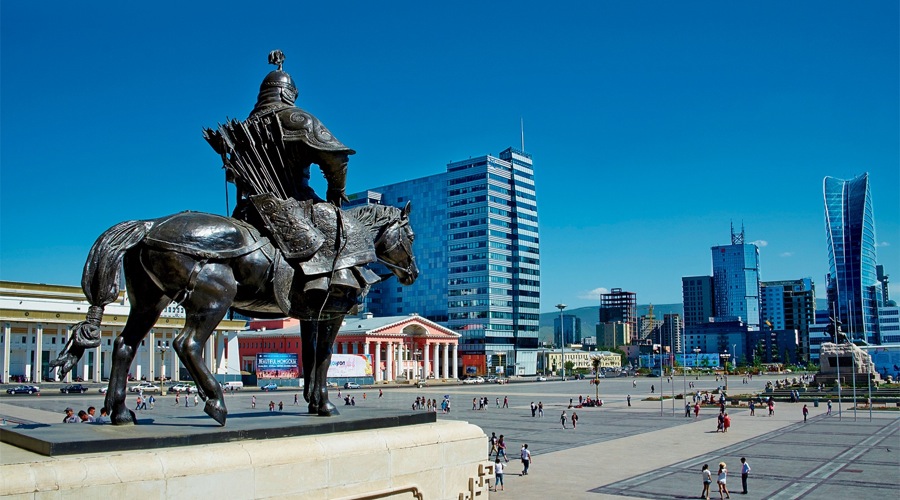
Mongolia to boost public services in 2019 www.globaltimes.cn
Mongolia has declared 2019 a "citizen-centered public service year," the Mongolian government's press office announced on Wednesday.
"The government decided to declare 2019 as a citizen-centered public service year in order to improve public services, eliminate bureaucracy in public service at all levels, and listen to the voices of citizens to solve pressing issues," the press office said in a statement.
In 2019, the government is going to implement around 70 measures, including intensifying the digitalization of public services, so as to improve the transparency of the public sector, eliminate bureaucracy and corruption, and save time, the statement said.
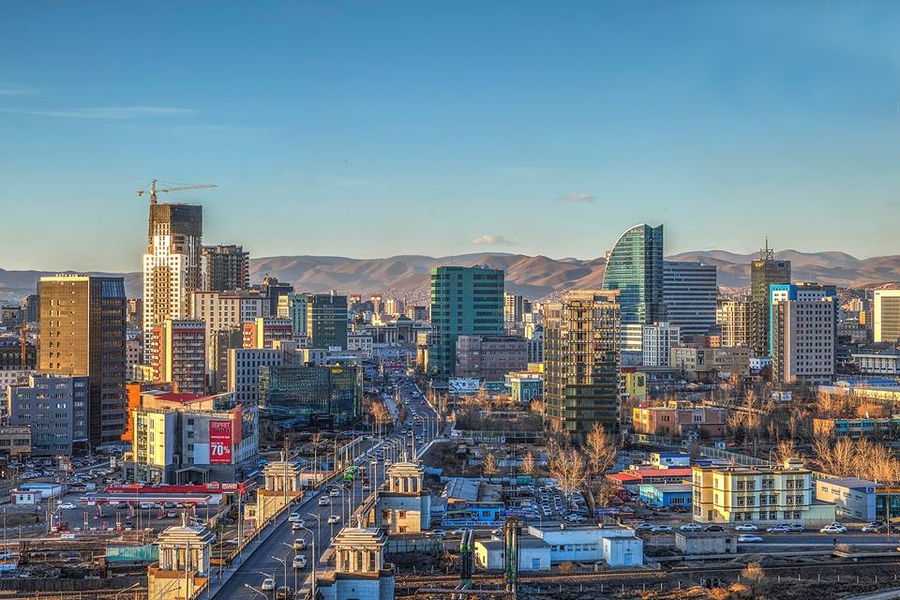
New mayor of Mongolia's capital elected www.xinhuanet.com
ULAN BATOR, Jan. 16 (Xinhua) -- Deputies of the Citizens' Representative Council of Ulan Bator elected a new mayor of the capital city on Wednesday.
Samdannyam Munkhchuluun was appointed by 24 deputies in the 45-seat council in a secret ballot.
"Working as mayor of the capital city is very responsible. I will work hard to solve the pressing issues in the city which is home to more than half of the country's population of 3.2 million," Munkhchuluun told reporters after the appointment.
The 40-year-old Munkhchuluun, a member of the ruling Mongolian People's Party, has served as a deputy of the Citizens' Representative Council since 2016.
Sundui Batbold, the former mayor of Ulan Bator, announced his resignation in late November after the country's Prime Minister Ukhnaa Khurelsukh accused him of not fulfilling his duties.
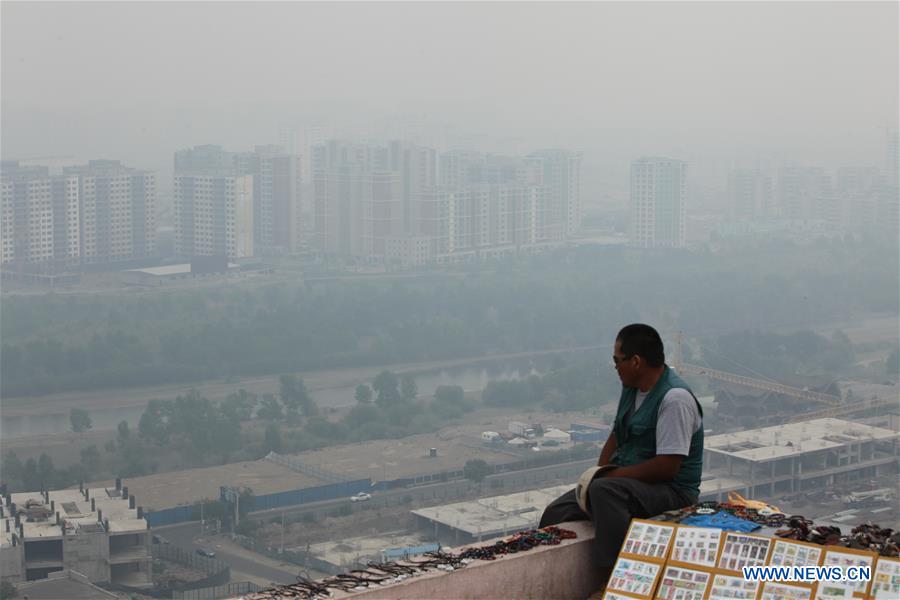
New mayor faces challenge to contain swine flu amid anger over pollution www.zgm.mn
Yesterday, the Citizens’ Representative Council of the Capital City (CRCC) elected the next Mayor of Ulaanbaatar city after finally rising from a political deadlock. Munkhchuluun Samdannyam, the newly elected Mayor of Ulaanbaatar city, now faces a burdening challenge of tackling the swine flu outbreak.
Mr. Munkhchuluun had a tight run against Amarsaikhan Sainbuyan, former Head of CRCC as the poll ended in a tie and the re-poll was in favor of Munkhculuun, who self-nominated himself at the meeting, with 24 to 43 votes. As for Amarsaikhan, the board of Mongolian People’s Party nominated him on December 28, but the election had to be postponed because the CRCC could not form the quorum.
After the appointment of Mr. Munkhchuluun, the CRCC put “Swine flu and influenza outbreak issues” as the next item on the order list, before the appointment of the next Head of CRCC. In the first week of this year, a total of 4,136 instances out of 57,508 ambulatory care were diagnosed with influenza or similar illness in the capital city alone. 35.6 percent of patients were infants aged 0 to 1, 26.8 percent were aged 2 to 4 and 14.4 percent were aged 5 to 9. Out of 3,098 calls at children’s emergency services, 59.5 percent were influenza or similar illness calls.
Additionally, the Cabinet resolved to grant 3-5 days of paid time off to parents and child guardians, who have a child suffering from influenza, at its regular meeting yesterday. After calling for private entities to support the implementation of the resolution, the Cabinet informed that the decision will be effective until March 16. Also, Minister of Health and other related officials were ordered to make local medical centers work on Saturdays until March 16.
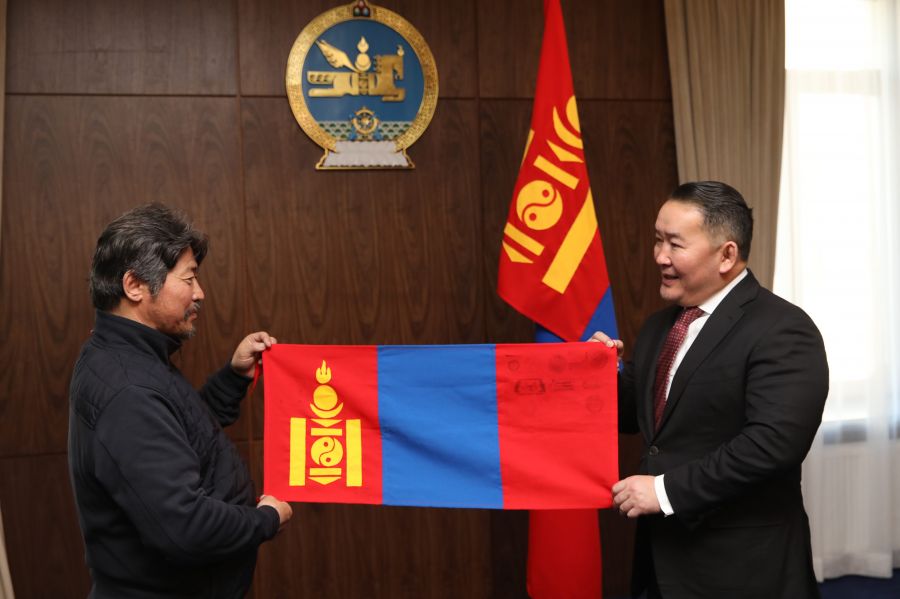
First state flag raised in Antarctica handed over to President www.montsame.mn
Ulaanbaatar /MONTSAME/ On January 16, President of Mongolia Kh.Battulga received head of Antarctica Research Center, researcher, Sc.D L.Dugerjav.
During the meeting, Professor L.Dugerjav handed over the state flag of Mongolia which was raised in Antarctica. This year marks the 10th anniversary of participation of Mongolia in Antarctica research. On the occasion of the anniversary, the Mongolian researchers worked with the researchers from other countries at the Bulgarian Antarctic Base (BAB) on the Livingston Island of Antarctica, establishing their own research base named after Chinggis Khaan.
President reminisced that Mongolian polar research L.Dugerjav embarked on an expedition to Antarctica a decade ago and wished him good luck with his research works.

Kisenosato, Japan's last remaining sumo champion, retires www.bbc.com
Japan's last remaining home-grown sumo champion has announced his retirement after a string of tournament losses.
Kisenosato Yutaka said he had been struggling with injuries but had wanted to continue wrestling to repay fans for their support.
In 2017, he became the first Japan-born wrestler in almost two decades to reach the rank of grand champion, known in Japanese as "yokozuna".
The only two wrestlers left at the elite level are both from Mongolia.
"I feel that I did everything I could," a tearful Kisenosato told reporters at a news conference.
"I was supported by so many people... I have nothing but gratitude."
He will be adopting the name of Araiso as a sumo elder. It is expected that he will train younger wrestlers as a coach in his retirement.
Who is Kisenosato Yutaka?
Kisenosato, whose real name is Yutaka Hagiwara, is from Ibaraki, north of Tokyo.
As a child, Kisenosato was a pitcher in his school's baseball club before he chose to train as a wrestler at a stable in Tokyo.
The 32-year old made his professional debut in 2002 and reached Japan's top Makuuchi division in 2004 at the age of 18.
After being runner-up on multiple occasions, he finally clinched his first tournament victory - and thereby his promotion to yokozuna - in January 2017.
Kisenosato went on to win his first tournament as a yokozuna in March that year.
However a chest muscle injury kept him out of eight straight tournaments in a row, the longest career pause of any yokozuna in sumo history.
Since competing again in September 2018, Kisenosato has posted eight successive losses, the worst run of any grand champion since the competition format was introduced in 1949.
"I was gradually recovering, but I was unable to wrestle in my own style," said Kisenosato, the first Japanese-born yokozuna to retire in 16 years.
Only two active yokozuna now remain in professional sumo wrestling: Mongolian-born pair Hakuho Sho and Kakuryu Rikisaburo.
In recent years, sumo has been hit by falling numbers of Japanese recruits, partly because it is seen as a tough, highly-regimented life.
The last Japanese-born wrestlers to reach the top were brothers Takanohana and Wakanohana, who made it to yokozuna in 1994 and 1998 respectively.
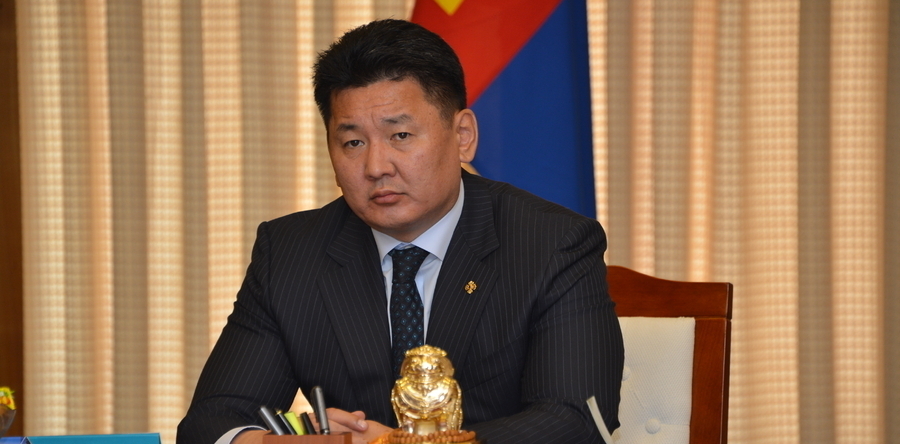
Government declares 2019 ‘Year of citizen-centered public services’ www.montsame.mn
Ulaanbaatar/MONTSAME/ The Government has announced 2019 as ‘Year of citizen-centered public services’ and approved a plan of actions during its expanded meeting on January 16.
The meeting brought together all cabinet members, deputy ministers, state secretaries, heads of agencies and governors and chairmen of Citizens’ Representative Meetings of aimags and the capital city.
In a scope of the year, it intends to implement about 70 measures within five main objectives: public service based on citizens’ needs, transparent decision-making with involvement of citizens, creation of optimal functions of public service, the outcome-based management and citizen-centered public service.
For instance, citizen-centered smart service will be developed by using the development of information and communication technology. All government organizations will be connected to state electronic information exchange system to offer about 320 kinds of public services to citizens. It is aimed at creating prompt and open public service without red tape. Moreover, service standards being used in public service organizations will be elevated into international standards.
At the meeting, cabinet members, heads of agencies and governors of aimags and the capital city were assigned to take actions and measures for the year in their designated areas and quarterly report the accomplishment to the government. Moreover, G.Zandanshatar, head of the Cabinet Secretariat was obliged to oversee the resolution’s implementation and report its progress to the Government.

World’s only segmented non–pneumatic tire system in Mongolia www.gogo.mn
Interview with Founder and CEO of airBoss Ltd., Mr. Donald Singlair Gillanders
Mongolian Uran Tusul LLC is introducing AirBoss system through it has affiliate Tire Service LLC since September 2018
I am proud to say that first order been placed and it is being produced to be shipped to Mongolia
The airBOSS segmented wheel system is a simple concept. The wheel system consists of 18, 20 or 22 hollow rubber segments (depending on the size of the wheel) bolted on to a specially designed metal wheel rim.
The airBOSS wheel systems are made to fit most makes of slow moving, heavy vehicles.
airBOSS was first established and introduced in England in 1990 since when the tires have been sold throughout Europe, Scandinavian countries, the Middle East and in the USA. It is the preferred tire of many machine users.
The airBOSS tire is approved by the major OEMs including JCB, CAT, Doosan Bobcat, Komatsu, Wacker Neuson, New Holland, GEHL, Daewoo, Terex and Case.
- Potential of airBOSS in Mongolia and it’s advantages
The airBOSS tire can provide considerable and significant financial benefits to companies and individuals in Mongolia by not having to replace a complete tire, thereby eliminating downtime, loss of production and reduced revenue.
The following is a summary of the major advantages of airBoss wheel systems over other tires as follows:-
Completely puncture proof. Unlike a pneumatic tire which, when punctured or torn, becomes unusable.
Never need to replace a complete tire. When a pneumatic tire is punctured or torn, the complete tire needs to be replaced. With airBoss only a segment or segments need to be replaced at a fraction of the cost of a replacement pneumatic tire.
Life time wheel rim. Can I use an ordinary wheel rim with airBOSS? No…. the steel rim used with the airBOSS wheel is unique in that it is specially engineered to enable the tire segments to fit and dovetail into each other to create a complete wheel. The rim is a one off purchase – unlike other tires in the market where the rim either needs to be replaced when a tire is damaged or the rim is incorporated within the tire itself.
All-purpose tire. It can be used on any terrain (soft or harsh) and in any environment.
Maintenance is simple. When a segment is damaged or worn beyond use, the operator removes that segment and replaces it with a new one. All that is required is a spanner.
Durability. The airBOSS tire lasts four times longer than other standard tires, operating with ease within environments where rough, sharp, hot, corrosive or abrasive working conditions are encountered. airBOSS is particularly suited to severe conditions which would normally damage or destroy the standard pneumatic tyre within a short time. The toughness, durability and simplicity of the airBOSS wheel system is the reason why it has been chosen by many customers throughout the world.
No downtime or loss of production. Changing segments takes about two minutes per segment. There is not even the need to jack up the vehicle. This is a major advantage over replacing a damaged standard tire, both in terms of time and cost, where in many cases with any other tire, the vehicle is unusable until a tire company attends and replaces the damaged tire.
A firm, stable ride. airBOSS provide a firm, yet stable ride. There is no repetitive bounce as with air-filled pneumatic tires
Superb traction and stability. The footprint provided by airBoss is up to 30% greater than most pneumatic tyres giving superb traction and stability. This is particularly advantageous in sloping or hilly terrain.
Demonstrates corporate responsibility. airBOSS is environmentally friendly in that the operator does not need to dispose of a complete tire or tires.
“I am sure that Mongolian users of AirBoss system would be delighted to have it in their equipment”

Ministers meet UNFPA Mongolia Country Representative www.montsame.mn
Ulaanbaatar /MONTSAME/ Foreign Minister D.Tsogtbaatar on January 15, met with Ms. Naomi Kitahara, Country Representative for United Nations Population Fund (UNFPA) in Mongolia, in connection with the expiry of her term of office.
While working as UNFPA Country Representative in Mongolia for six years, Ms. Naomi Kitahara has made great contribution to expansion of the cooperation between the Government of Mongolia and UNFPA. In particular, projects and programs of the fund provided substantial support in development of population of Mongolia, protection of rights of women and youth, health improvement and enhancement of herders’ livelihoods, noted the Foreign Minister.
Ms. Naomi Kitahara in turn, expressed her pleasure at having worked closely with public and civil society organizations and making a certain contribution towards social development of Mongolia during her term of office.
Minister of Labor and Social Protection S.Chinzorig also met with the UNFPA Mongolia Country Representative and handed over 'Foremost employee for social protection' award in recognition of her valuable contribution to youth development of Mongolia.

African Swine Fever Spreads to Mongolia www.bloomberg.com
Asian pork producers need to redouble efforts to combat African swine fever after Mongolia reported its first outbreak, just five months after the deadly pig disease was first discovered in China.
“This indicates that it’s very difficult for any country to avoid introduction of the virus,” Dirk Pfeiffer, a professor in the Department of Infectious Diseases and Public Health at the City University of Hong Kong, said in an interview. The fact that Mongolia has a low pig population density “further strengthens the hypothesis of widespread geographical presence of the virus,” he said.
The outbreak in a second Asian country means China’s neighbors should intensify efforts to prepare for the disease that’s prompted mass pig cullings in China -- the world’s biggest hog market. The United Nations’ Food and Agriculture Organization, which is spearheading an international effort to control the virus, has already said the spread of African swine fever to other Asian countries is a near certainty.
Animal health authorities in Asia have increased border surveillance and China has slaughtered more than 900,000 pigs to contain the disease, which isn’t known to harm humans. With no vaccine to protect animals, researchers say the virus -- which can survive for more than a year in dry-cured ham -- is a particular risk to countries, such as Thailand, Vietnam and Myanmar.
The Mongolian outbreak occurred in a “backyard” swine operation in the center of Bulgan region, which borders Russia, according to a posting on the World Organization for Animal Health’s website dated Tuesday. A total of 214 hogs were killed and disposed of after 85 cases of the ASF were found at the operation. More work need to be done to determine whether the disease arrived in Mongolia from China or eastern Europe, Pfeiffer said.
“No single country can afford the illusion that they can isolate themselves from the regional dynamics of how this virus is being moved around,” Pfeiffer said. “It will get more complicated if and where it gets established in wild pig populations.”
Pork prices in China have been hammered as farms increase slaughtering to avoid contamination, bolstering supply. By the first week of January, prices in northeast provinces had fallen 34 percent from a year earlier and 16 percent in the north, according to data published by the nation’s Ministry of Agriculture and Rural Affairs.
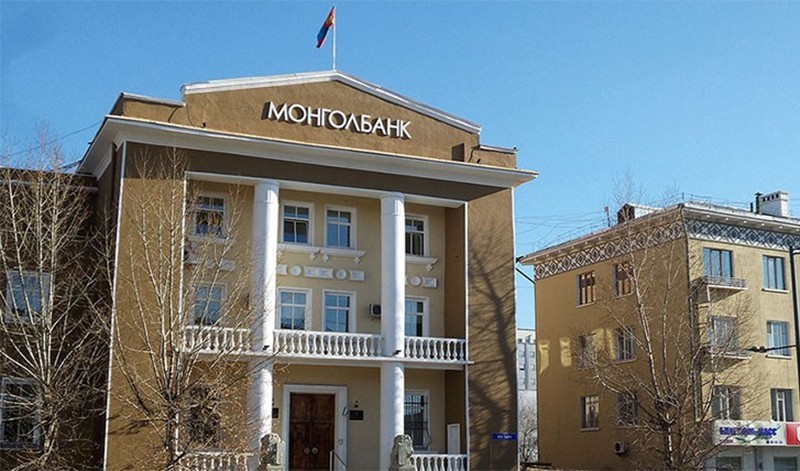
Inflation rises above BoM target www.zgm.mn
National Statistics Office (NSO) released the year-end preliminary results of social and economic situations of Mongolia yesterday. The year-end economic indicators were mostly positive as expected thanks to mining sector boom and the implementation of the International Monetary Fund program; however, inflation peaked above the Bank of Mongolia’s (BoM) target level for the second month in December 2018 following the rise in fuel prices and consumption.
2018 was rather generous for Mongolia considering the fact that the economy grew by 6.3 percent in the first half. At the time, the Asian Development Bank highlighted that this was “driven by the expansion of investments in the mining sector and an increase in household consumption on the back of improved household loan grants.” As mentioned, consumer loan played its role in the economy. However, growing inflation is drawback for increased consumption. Consumer loan pushes households to pay three-quarters of their income to loans, creating a situation where the consumer could face bigger risk from the loan repayment.
According to the report, the inflation measured by the national consumer price index increased by 8.1 percent from the previous year. NSO explained that the growth was mainly contributed by increases in prices of food and non-alcoholic beverages by 9.1 percent and alcoholic beverages and tobacco by 8 percent, transport by 9.7 percent, housing, water, electricity, and fuels by 16.3 percent, and health by 11.4 percent.
The Monetary Policy Committee reached a decision to limit household debt-to-income ratio at 70 percent and set the maturity of non-mortgage commercials to not exceed 30 months, which took effect on January 1, 2019. Plus, petroleum price was lowered by MNT 100 this week; thus, economists expect the inflation to stabilize in the upcoming months.
Additionally, the total trade turnover reached USD 12.9 billion as of December 2018, of which exports totaled USD 7 billion and imports - USD 5.9 billion. Compared to the same period of the previous year, export increased by 13.1 percent and import by 35.5 percent. Money supply reached MNT 19.5 trillion in November, displaying MNT 3.6 trillion growth (4.4 percent) year over year. The currency issued in circulation totaled MNT 968.6 billion, an 8.2 percent increase. Additionally, the nominal average exchange rate of the MNT against the USD announced by the Bank of Mongolia depreciated by 8.4 percent from the previous year and fell 3.8 percent against CNY.
- «
- 1
- 2
- 3
- 4
- 5
- 6
- 7
- 8
- 9
- 10
- 11
- 12
- 13
- 14
- 15
- 16
- 17
- 18
- 19
- 20
- 21
- 22
- 23
- 24
- 25
- 26
- 27
- 28
- 29
- 30
- 31
- 32
- 33
- 34
- 35
- 36
- 37
- 38
- 39
- 40
- 41
- 42
- 43
- 44
- 45
- 46
- 47
- 48
- 49
- 50
- 51
- 52
- 53
- 54
- 55
- 56
- 57
- 58
- 59
- 60
- 61
- 62
- 63
- 64
- 65
- 66
- 67
- 68
- 69
- 70
- 71
- 72
- 73
- 74
- 75
- 76
- 77
- 78
- 79
- 80
- 81
- 82
- 83
- 84
- 85
- 86
- 87
- 88
- 89
- 90
- 91
- 92
- 93
- 94
- 95
- 96
- 97
- 98
- 99
- 100
- 101
- 102
- 103
- 104
- 105
- 106
- 107
- 108
- 109
- 110
- 111
- 112
- 113
- 114
- 115
- 116
- 117
- 118
- 119
- 120
- 121
- 122
- 123
- 124
- 125
- 126
- 127
- 128
- 129
- 130
- 131
- 132
- 133
- 134
- 135
- 136
- 137
- 138
- 139
- 140
- 141
- 142
- 143
- 144
- 145
- 146
- 147
- 148
- 149
- 150
- 151
- 152
- 153
- 154
- 155
- 156
- 157
- 158
- 159
- 160
- 161
- 162
- 163
- 164
- 165
- 166
- 167
- 168
- 169
- 170
- 171
- 172
- 173
- 174
- 175
- 176
- 177
- 178
- 179
- 180
- 181
- 182
- 183
- 184
- 185
- 186
- 187
- 188
- 189
- 190
- 191
- 192
- 193
- 194
- 195
- 196
- 197
- 198
- 199
- 200
- 201
- 202
- 203
- 204
- 205
- 206
- 207
- 208
- 209
- 210
- 211
- 212
- 213
- 214
- 215
- 216
- 217
- 218
- 219
- 220
- 221
- 222
- 223
- 224
- 225
- 226
- 227
- 228
- 229
- 230
- 231
- 232
- 233
- 234
- 235
- 236
- 237
- 238
- 239
- 240
- 241
- 242
- 243
- 244
- 245
- 246
- 247
- 248
- 249
- 250
- 251
- 252
- 253
- 254
- 255
- 256
- 257
- 258
- 259
- 260
- 261
- 262
- 263
- 264
- 265
- 266
- 267
- 268
- 269
- 270
- 271
- 272
- 273
- 274
- 275
- 276
- 277
- 278
- 279
- 280
- 281
- 282
- 283
- 284
- 285
- 286
- 287
- 288
- 289
- 290
- 291
- 292
- 293
- 294
- 295
- 296
- 297
- 298
- 299
- 300
- 301
- 302
- 303
- 304
- 305
- 306
- 307
- 308
- 309
- 310
- 311
- 312
- 313
- 314
- 315
- 316
- 317
- 318
- 319
- 320
- 321
- 322
- 323
- 324
- 325
- 326
- 327
- 328
- 329
- 330
- 331
- 332
- 333
- 334
- 335
- 336
- 337
- 338
- 339
- 340
- 341
- 342
- 343
- 344
- 345
- 346
- 347
- 348
- 349
- 350
- 351
- 352
- 353
- 354
- 355
- 356
- 357
- 358
- 359
- 360
- 361
- 362
- 363
- 364
- 365
- 366
- 367
- 368
- 369
- 370
- 371
- 372
- 373
- 374
- 375
- 376
- 377
- 378
- 379
- 380
- 381
- 382
- 383
- 384
- 385
- 386
- 387
- 388
- 389
- 390
- 391
- 392
- 393
- 394
- 395
- 396
- 397
- 398
- 399
- 400
- 401
- 402
- 403
- 404
- 405
- 406
- 407
- 408
- 409
- 410
- 411
- 412
- 413
- 414
- 415
- 416
- 417
- 418
- 419
- 420
- 421
- 422
- 423
- 424
- 425
- 426
- 427
- 428
- 429
- 430
- 431
- 432
- 433
- 434
- 435
- 436
- 437
- 438
- 439
- 440
- 441
- 442
- 443
- 444
- 445
- 446
- 447
- 448
- 449
- 450
- 451
- 452
- 453
- 454
- 455
- 456
- 457
- 458
- 459
- 460
- 461
- 462
- 463
- 464
- 465
- 466
- 467
- 468
- 469
- 470
- 471
- 472
- 473
- 474
- 475
- 476
- 477
- 478
- 479
- 480
- 481
- 482
- 483
- 484
- 485
- 486
- 487
- 488
- 489
- 490
- 491
- 492
- 493
- 494
- 495
- 496
- 497
- 498
- 499
- 500
- 501
- 502
- 503
- 504
- 505
- 506
- 507
- 508
- 509
- 510
- 511
- 512
- 513
- 514
- 515
- 516
- 517
- 518
- 519
- 520
- 521
- 522
- 523
- 524
- 525
- 526
- 527
- 528
- 529
- 530
- 531
- 532
- 533
- 534
- 535
- 536
- 537
- 538
- 539
- 540
- 541
- 542
- 543
- 544
- 545
- 546
- 547
- 548
- 549
- 550
- 551
- 552
- 553
- 554
- 555
- 556
- 557
- 558
- 559
- 560
- 561
- 562
- 563
- 564
- 565
- 566
- 567
- 568
- 569
- 570
- 571
- 572
- 573
- 574
- 575
- 576
- 577
- 578
- 579
- 580
- 581
- 582
- 583
- 584
- 585
- 586
- 587
- 588
- 589
- 590
- 591
- 592
- 593
- 594
- 595
- 596
- 597
- 598
- 599
- 600
- 601
- 602
- 603
- 604
- 605
- 606
- 607
- 608
- 609
- 610
- 611
- 612
- 613
- 614
- 615
- 616
- 617
- 618
- 619
- 620
- 621
- 622
- 623
- 624
- 625
- 626
- 627
- 628
- 629
- 630
- 631
- 632
- 633
- 634
- 635
- 636
- 637
- 638
- 639
- 640
- 641
- 642
- 643
- 644
- 645
- 646
- 647
- 648
- 649
- 650
- 651
- 652
- 653
- 654
- 655
- 656
- 657
- 658
- 659
- 660
- 661
- 662
- 663
- 664
- 665
- 666
- 667
- 668
- 669
- 670
- 671
- 672
- 673
- 674
- 675
- 676
- 677
- 678
- 679
- 680
- 681
- 682
- 683
- 684
- 685
- 686
- 687
- 688
- 689
- 690
- 691
- 692
- 693
- 694
- 695
- 696
- 697
- 698
- 699
- 700
- 701
- 702
- 703
- 704
- 705
- 706
- 707
- 708
- 709
- 710
- 711
- 712
- 713
- 714
- 715
- 716
- 717
- 718
- 719
- 720
- 721
- 722
- 723
- 724
- 725
- 726
- 727
- 728
- 729
- 730
- 731
- 732
- 733
- 734
- 735
- 736
- 737
- 738
- 739
- 740
- 741
- 742
- 743
- 744
- 745
- 746
- 747
- 748
- 749
- 750
- 751
- 752
- 753
- 754
- 755
- 756
- 757
- 758
- 759
- 760
- 761
- 762
- 763
- 764
- 765
- 766
- 767
- 768
- 769
- 770
- 771
- 772
- 773
- 774
- 775
- 776
- 777
- 778
- 779
- 780
- 781
- 782
- 783
- 784
- 785
- 786
- 787
- 788
- 789
- 790
- 791
- 792
- 793
- 794
- 795
- 796
- 797
- 798
- 799
- 800
- 801
- 802
- 803
- 804
- 805
- 806
- 807
- 808
- 809
- 810
- 811
- 812
- 813
- 814
- 815
- 816
- 817
- 818
- 819
- 820
- 821
- 822
- 823
- 824
- 825
- 826
- 827
- 828
- 829
- 830
- 831
- 832
- 833
- 834
- 835
- 836
- 837
- 838
- 839
- 840
- 841
- 842
- 843
- 844
- 845
- 846
- 847
- 848
- 849
- 850
- 851
- 852
- 853
- 854
- 855
- 856
- 857
- 858
- 859
- 860
- 861
- 862
- 863
- 864
- 865
- 866
- 867
- 868
- 869
- 870
- 871
- 872
- 873
- 874
- 875
- 876
- 877
- 878
- 879
- 880
- 881
- 882
- 883
- 884
- 885
- 886
- 887
- 888
- 889
- 890
- 891
- 892
- 893
- 894
- 895
- 896
- 897
- 898
- 899
- 900
- 901
- 902
- 903
- 904
- 905
- 906
- 907
- 908
- 909
- 910
- 911
- 912
- 913
- 914
- 915
- 916
- 917
- 918
- 919
- 920
- 921
- 922
- 923
- 924
- 925
- 926
- 927
- 928
- 929
- 930
- 931
- 932
- 933
- 934
- 935
- 936
- 937
- 938
- 939
- 940
- 941
- 942
- 943
- 944
- 945
- 946
- 947
- 948
- 949
- 950
- 951
- 952
- 953
- 954
- 955
- 956
- 957
- 958
- 959
- 960
- 961
- 962
- 963
- 964
- 965
- 966
- 967
- 968
- 969
- 970
- 971
- 972
- 973
- 974
- 975
- 976
- 977
- 978
- 979
- 980
- 981
- 982
- 983
- 984
- 985
- 986
- 987
- 988
- 989
- 990
- 991
- 992
- 993
- 994
- 995
- 996
- 997
- 998
- 999
- 1000
- 1001
- 1002
- 1003
- 1004
- 1005
- 1006
- 1007
- 1008
- 1009
- 1010
- 1011
- 1012
- 1013
- 1014
- 1015
- 1016
- 1017
- 1018
- 1019
- 1020
- 1021
- 1022
- 1023
- 1024
- 1025
- 1026
- 1027
- 1028
- 1029
- 1030
- 1031
- 1032
- 1033
- 1034
- 1035
- 1036
- 1037
- 1038
- 1039
- 1040
- 1041
- 1042
- 1043
- 1044
- 1045
- 1046
- 1047
- 1048
- 1049
- 1050
- 1051
- 1052
- 1053
- 1054
- 1055
- 1056
- 1057
- 1058
- 1059
- 1060
- 1061
- 1062
- 1063
- 1064
- 1065
- 1066
- 1067
- 1068
- 1069
- 1070
- 1071
- 1072
- 1073
- 1074
- 1075
- 1076
- 1077
- 1078
- 1079
- 1080
- 1081
- 1082
- 1083
- 1084
- 1085
- 1086
- 1087
- 1088
- 1089
- 1090
- 1091
- 1092
- 1093
- 1094
- 1095
- 1096
- 1097
- 1098
- 1099
- 1100
- 1101
- 1102
- 1103
- 1104
- 1105
- 1106
- 1107
- 1108
- 1109
- 1110
- 1111
- 1112
- 1113
- 1114
- 1115
- 1116
- 1117
- 1118
- 1119
- 1120
- 1121
- 1122
- 1123
- 1124
- 1125
- 1126
- 1127
- 1128
- 1129
- 1130
- 1131
- 1132
- 1133
- 1134
- 1135
- 1136
- 1137
- 1138
- 1139
- 1140
- 1141
- 1142
- 1143
- 1144
- 1145
- 1146
- 1147
- 1148
- 1149
- 1150
- 1151
- 1152
- 1153
- 1154
- 1155
- 1156
- 1157
- 1158
- 1159
- 1160
- 1161
- 1162
- 1163
- 1164
- 1165
- 1166
- 1167
- 1168
- 1169
- 1170
- 1171
- 1172
- 1173
- 1174
- 1175
- 1176
- 1177
- 1178
- 1179
- 1180
- 1181
- 1182
- 1183
- 1184
- 1185
- 1186
- 1187
- 1188
- 1189
- 1190
- 1191
- 1192
- 1193
- 1194
- 1195
- 1196
- 1197
- 1198
- 1199
- 1200
- 1201
- 1202
- 1203
- 1204
- 1205
- 1206
- 1207
- 1208
- 1209
- 1210
- 1211
- 1212
- 1213
- 1214
- 1215
- 1216
- 1217
- 1218
- 1219
- 1220
- 1221
- 1222
- 1223
- 1224
- 1225
- 1226
- 1227
- 1228
- 1229
- 1230
- 1231
- 1232
- 1233
- 1234
- 1235
- 1236
- 1237
- 1238
- 1239
- 1240
- 1241
- 1242
- 1243
- 1244
- 1245
- 1246
- 1247
- 1248
- 1249
- 1250
- 1251
- 1252
- 1253
- 1254
- 1255
- 1256
- 1257
- 1258
- 1259
- 1260
- 1261
- 1262
- 1263
- 1264
- 1265
- 1266
- 1267
- 1268
- 1269
- 1270
- 1271
- 1272
- 1273
- 1274
- 1275
- 1276
- 1277
- 1278
- 1279
- 1280
- 1281
- 1282
- 1283
- 1284
- 1285
- 1286
- 1287
- 1288
- 1289
- 1290
- 1291
- 1292
- 1293
- 1294
- 1295
- 1296
- 1297
- 1298
- 1299
- 1300
- 1301
- 1302
- 1303
- 1304
- 1305
- 1306
- 1307
- 1308
- 1309
- 1310
- 1311
- 1312
- 1313
- 1314
- 1315
- 1316
- 1317
- 1318
- 1319
- 1320
- 1321
- 1322
- 1323
- 1324
- 1325
- 1326
- 1327
- 1328
- 1329
- 1330
- 1331
- 1332
- 1333
- 1334
- 1335
- 1336
- 1337
- 1338
- 1339
- 1340
- 1341
- 1342
- 1343
- 1344
- 1345
- 1346
- 1347
- 1348
- 1349
- 1350
- 1351
- 1352
- 1353
- 1354
- 1355
- 1356
- 1357
- 1358
- 1359
- 1360
- 1361
- 1362
- 1363
- 1364
- 1365
- 1366
- 1367
- 1368
- 1369
- 1370
- 1371
- 1372
- 1373
- 1374
- 1375
- 1376
- 1377
- 1378
- 1379
- 1380
- 1381
- 1382
- 1383
- 1384
- 1385
- 1386
- 1387
- 1388
- 1389
- 1390
- 1391
- 1392
- 1393
- 1394
- 1395
- 1396
- 1397
- 1398
- 1399
- 1400
- 1401
- 1402
- 1403
- 1404
- 1405
- 1406
- 1407
- 1408
- 1409
- 1410
- 1411
- 1412
- 1413
- 1414
- 1415
- 1416
- 1417
- 1418
- 1419
- 1420
- 1421
- 1422
- 1423
- 1424
- 1425
- 1426
- 1427
- 1428
- 1429
- 1430
- 1431
- 1432
- 1433
- 1434
- 1435
- 1436
- 1437
- 1438
- 1439
- 1440
- 1441
- 1442
- 1443
- 1444
- 1445
- 1446
- 1447
- 1448
- 1449
- 1450
- 1451
- 1452
- 1453
- 1454
- 1455
- 1456
- 1457
- 1458
- 1459
- 1460
- 1461
- 1462
- 1463
- 1464
- 1465
- 1466
- 1467
- 1468
- 1469
- 1470
- 1471
- 1472
- 1473
- 1474
- 1475
- 1476
- 1477
- 1478
- 1479
- 1480
- 1481
- 1482
- 1483
- 1484
- 1485
- 1486
- 1487
- 1488
- 1489
- 1490
- 1491
- 1492
- 1493
- 1494
- 1495
- 1496
- 1497
- 1498
- 1499
- 1500
- 1501
- 1502
- 1503
- 1504
- 1505
- 1506
- 1507
- 1508
- 1509
- 1510
- 1511
- 1512
- 1513
- 1514
- 1515
- 1516
- 1517
- 1518
- 1519
- 1520
- 1521
- 1522
- 1523
- 1524
- 1525
- 1526
- 1527
- 1528
- 1529
- 1530
- 1531
- 1532
- 1533
- 1534
- 1535
- 1536
- 1537
- 1538
- 1539
- 1540
- 1541
- 1542
- 1543
- 1544
- 1545
- 1546
- 1547
- 1548
- 1549
- 1550
- 1551
- 1552
- 1553
- 1554
- 1555
- 1556
- 1557
- 1558
- 1559
- 1560
- 1561
- 1562
- 1563
- 1564
- 1565
- 1566
- 1567
- 1568
- 1569
- 1570
- 1571
- 1572
- 1573
- 1574
- 1575
- 1576
- 1577
- 1578
- 1579
- 1580
- 1581
- 1582
- 1583
- 1584
- 1585
- 1586
- 1587
- 1588
- 1589
- 1590
- 1591
- 1592
- 1593
- 1594
- 1595
- 1596
- 1597
- 1598
- 1599
- 1600
- 1601
- 1602
- 1603
- 1604
- 1605
- 1606
- 1607
- 1608
- 1609
- 1610
- 1611
- 1612
- 1613
- 1614
- 1615
- 1616
- 1617
- 1618
- 1619
- 1620
- 1621
- 1622
- 1623
- 1624
- 1625
- 1626
- 1627
- 1628
- 1629
- 1630
- 1631
- 1632
- 1633
- 1634
- 1635
- 1636
- 1637
- 1638
- 1639
- 1640
- 1641
- 1642
- 1643
- 1644
- 1645
- 1646
- 1647
- 1648
- 1649
- 1650
- 1651
- 1652
- 1653
- 1654
- 1655
- 1656
- 1657
- 1658
- 1659
- 1660
- 1661
- 1662
- 1663
- 1664
- 1665
- 1666
- 1667
- 1668
- 1669
- 1670
- 1671
- 1672
- 1673
- 1674
- 1675
- 1676
- 1677
- 1678
- 1679
- 1680
- 1681
- 1682
- 1683
- 1684
- 1685
- 1686
- 1687
- 1688
- 1689
- 1690
- 1691
- 1692
- 1693
- 1694
- »






